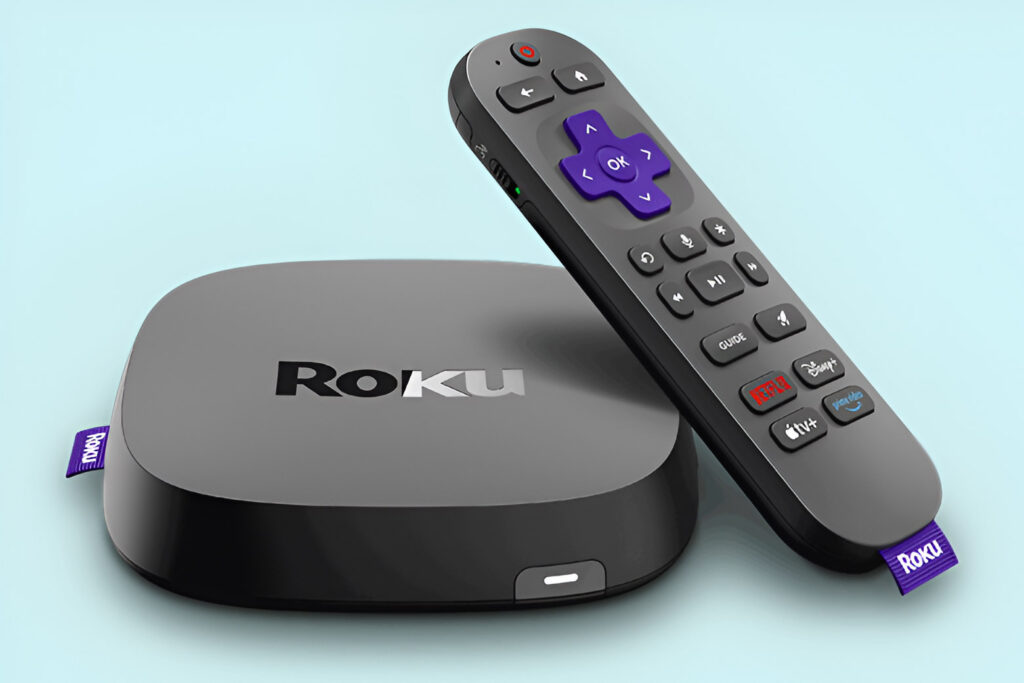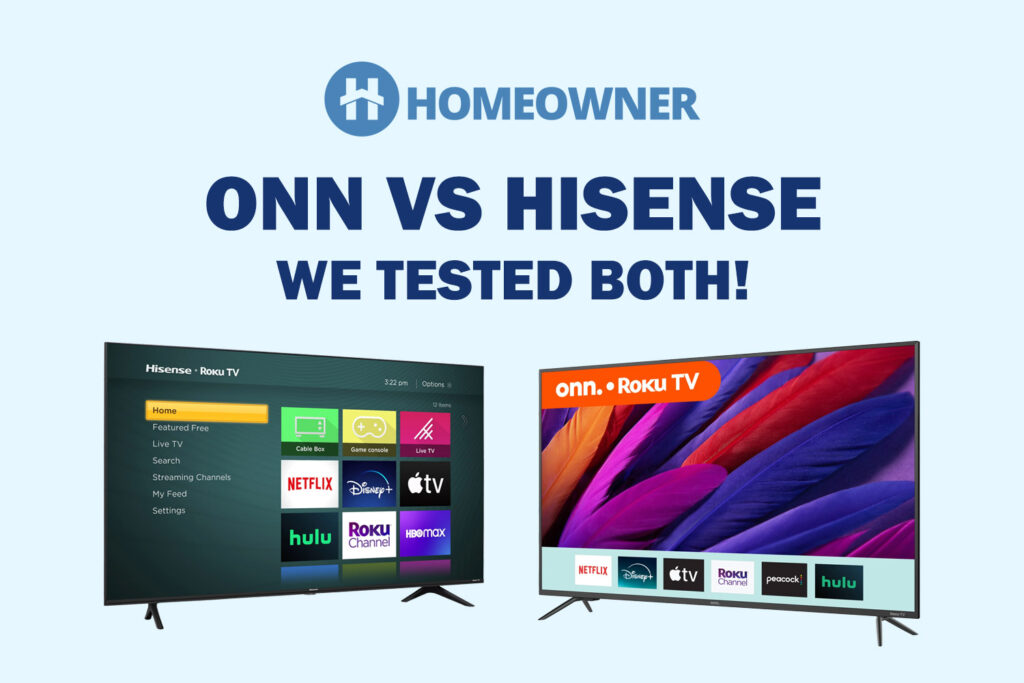In this post:
- 1. Best Overall: ASUS ROG GT-AX11000
- 2. Best Runner-Up: TP-Link Archer AX90
- 3. Best for Gig Internet: Netgear Nighthawk RAX70
- 4. Best Mesh WiFi: TP-Link Deco XE75
- 5. Best Value for Money: Linksys MR9610
- 6. Best Parental Controls: Gryphon Tower
- 7. Best for Smarthomes: Google Nest WiFi
- 8. Cheapest Option: ASUS RT-AX55
- Frequently Asked Questions
- Verdict
Speed and coverage are the two primary ingredients that make up an efficient and reliable routing system for your 2-story house. But the thing is, most routers might not reach even close to the values mentioned in the spec sheet.
Also, not all devices can provide wireless coverage in a large 2-story house. It means getting a sub-par device can leave many WiFi dead zones. It's mostly because they lack some pivotal features and technologies like MU-MIMO, OFDMA, and others, or they’re a victim of multiple obstructions where they’re working.
So, how to find an ideal device? Fret not, I have hand-picked some of the best options and reviewed each of them based on my detailed tests.
Before I get into that, here’s a pro tip for you:
If your house measures in the 2000-3000 Sq Ft range, standalone routers should work well, but if it’s above 3500 Sq Ft, mesh WiFi is the best bet. So, choose carefully!
To find out whether a router wraps around your entire house with stable and efficient signals, just looking into the spec sheet won’t work. It’s important to install and make it work under various scenarios, which is why I can tag my mentioned options as the best internet routers for large homes.
My list was made under the comprehension that users with varying internet plans need suitable routers, sp, go on, read through the review, and make your selection.
1. Best Overall: ASUS ROG GT-AX11000
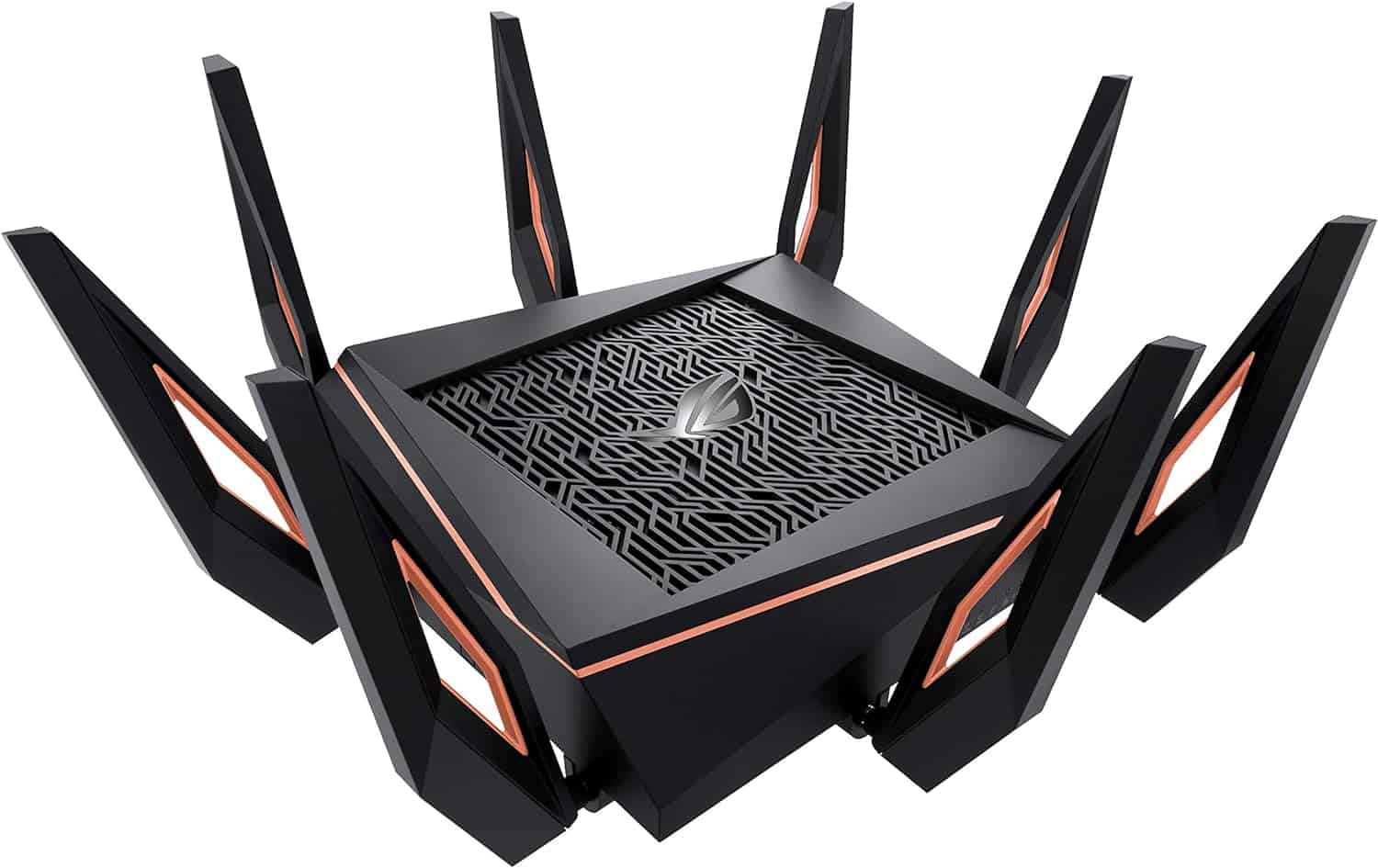
- WiFi Range: Up to 3,500 Sq Ft
- Number of Devices Supported: 100+
- Wireless Standard: Wi-Fi 6 (802.11ax)
- Supported Internet Plan: Up to 2 Gbps
- 2.4GHz Speeds: 1148 Mbps
- 5GHz Speeds: 4804 + 4804 Mbps
- Ports: 1 x 2.5G WAN/LAN + 1 x Gig WAN + 4 x Gig LAN + 2 x USB 3.0
- Processor: 1.8GHz Quad-Core Processor
- RAM & NAND Memory: 1GB + 256MB
- App Support: Yes
Topping my list is a tri-band router from Asus’s celebrated range of gaming equipment, Republic of Gamers (ROG). The ROG GT-AX11000 comes with top-tier features like 11000 Mbps speed capacity, a multi-gig port, and powerful antennas complemented by a cutting-edge quad-core processor to deliver the best performance in your 2-story house.
You'll also find a lot of upgrades in this over its predecessor, RT-AX6000, in terms of throughput capacity, coverage, and bands, but lags behind the number of ports and processing ability.
Why is it suited for a two-story house?
The ASUS ROG GT-AX11000 probably gets included in the elite list, courtesy of its eight beamforming antennas and a maximum theoretical coverage value of 3500 Sq Ft. In real-life settings, the antennas could transmit signals to up to 3000 Sq Ft, penetrating thick walls and thriving within multiple interferences.
That’s not it. The router has technologies like MU-MIMO, OFDMA, and QoS, all you need to maintain signal stability over multiple connected devices. At a stretch, the device could handle up to 55 devices, including smartphones, laptops, and gaming consoles, without frailing down.
Wireless Speeds
The tri-band setup of the Asus router has an aggregated speed of 11000 Mbps, with speed distributed over the bands as follows:
| 6 GHz: 4804 Mbps | 5 GHz: 4804 Mbps | 2.4 GHz: 1148 Mbps |
In my throughput tests with Xfinity 2Gbps plan, its results were extremely impressive. Over the 6GHz band, download speeds fared at 1.94 Gbps, while the value was 1.84 Gbps with the 5GHz band. At the same time, a download speed of 987 Mbps lets me download anything within a flicker of seconds. Other than that, upload speed scores for the respective bands were around 924 Mbps, 897 Mbps, and 315 Mbps.
Ports & Wired Connectivity
Asus RT-AX11000 has exceptional wired capabilities with six Ethernet ports (including a multi-gig port) at its disposal. Paired with a similar plan, the devices could churn out maximum download and upload speeds of 1.98 Gbps and 1.05 Gbps, respectively.
Besides the speed boost, there was a significant improvement concerning performance, as the games played out at 105fps, compared to 98fps in wireless connections.
Security Features
Another area where this router stands out is its security features, not because its AiProtection Pro instills some advanced features but because you get these without investing a single penny.
Some of its notable features include malware protection, intrusion blocking, malicious website detection alongside WPA3, VPN, and guest access.
It also hosts a number of parental control features like scheduled network pausing, an internet dashboard featuring online activities of your devices, an age-based filter, and manual website blocking.
Conclusion
In conclusion, Asus ROG RT-AX11000 is probably the best router for a multi-level home in all respect, be it speed, coverage, or reliability. Alongside this, its advanced security tools make sure your network and connected devices are safe from unwanted and outside threats. All these features and performance does come at a price, which might be its only drawback.
Pros
- Multi-gig port
- Faster throughput
- Great coverage
- Advanced security tools and parental controls
Cons
- Premium price
2. Best Runner-Up: TP-Link Archer AX90
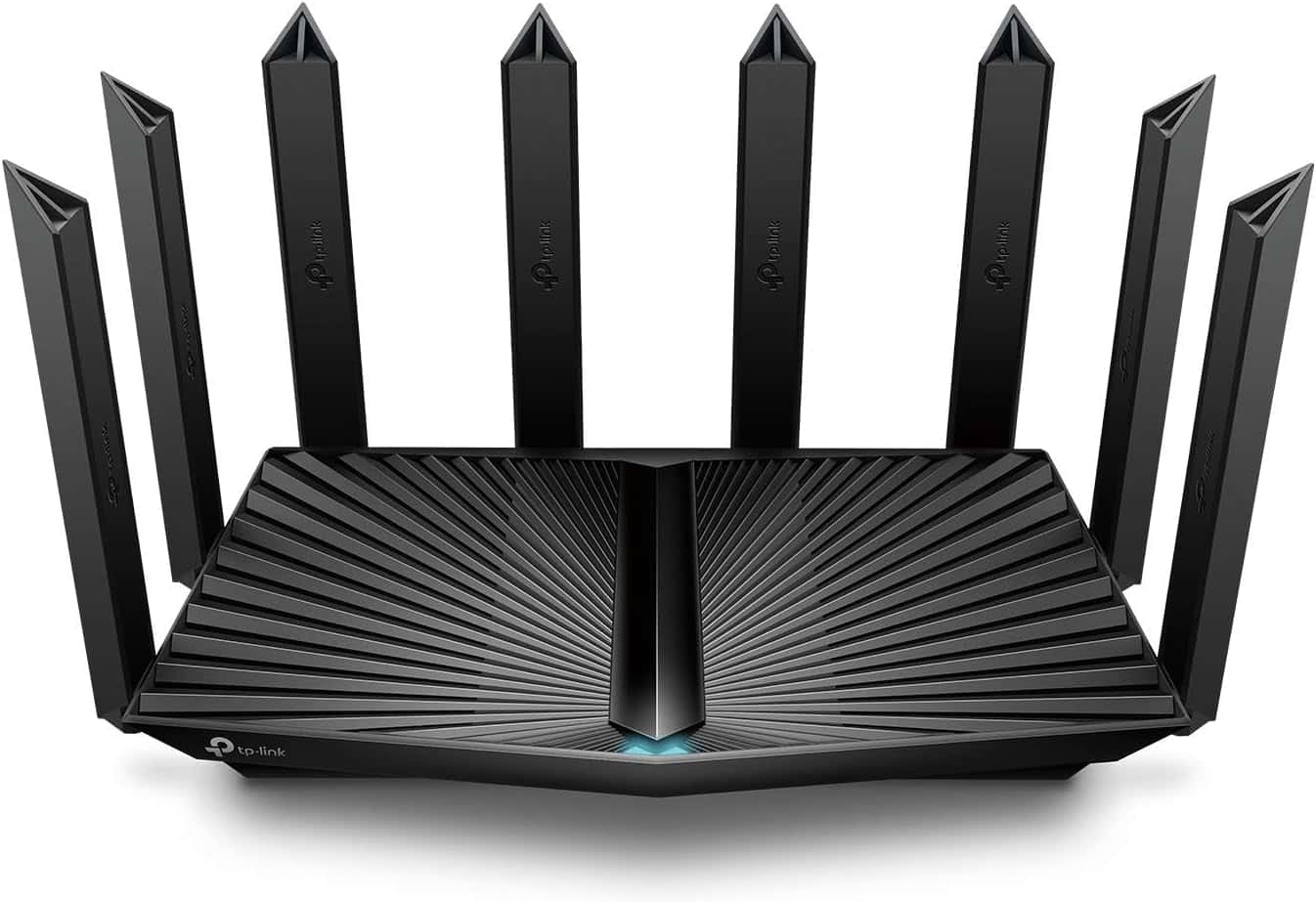
- WiFi Range: Up to 2,500 Sq Ft
- Number of Devices Supported: 40+
- Wireless Standard: Wi-Fi 6 (802.11ax)
- Supported Internet Plan: Up to 2 Gbps
- 2.4GHz Speeds: 574 Mbps
- 5GHz Speeds: 4804 + 1201 Mbps
- Ports: 1 x 2.5G WAN/LAN + 1 x Gig LAN/WAN + 3 x Gig LAN + 1 x USB 3.0 + 1 x USB 2.0
- Processor: 1.5GHz Quad-Core
- RAM & NAND Memory: 512MB + 128MB
- App Support: Yes
Next on my list is a souped-up version of TP-Link Archer AX73, which really got our hearts by offering good performance at an affordable price. Now, with Archer AX90, you’ve got an improved WiFi 6 speed capacity, coverage, and a multi-gig port so that you can expect a potential surge in performance over your devices. Let’s discuss, in detail, how these fares out in real life.
Why is it suited for a two-story house?
Archer AX90, with its eight-antenna setup and beamforming technology, can impart signals to up to 2200-2400 Sq Ft area. So, my decent-sized two-story house was encased with powerful signals. Now a point to bear in mind here is that the coverage might vary depending on the number of obstructions present.
And, courtesy of MU-MIMO and QoS, connections on 32 devices weren’t frail, and we could play heavy games and stream 4K movies without making much fuss.
Wireless Speeds
This WiFi 6 supported tri-band router has an aggregated speed of 6600 Mbps, distributed over different bands as follows:
| 5 GHz (1): 4804 Mbps | 5 GHz (2): 1201 Mbps | 2.4 GHz: 574 Mbps |
Testing it in my household setup, the router extracted excellent results on the 5GHz bands. The additional 5GHz had a download, and upload speed score of 1.87 Gbps and 917 Mbps, while respective values for the other band were 1.1 Gbps and 647 Mbps. At the same time, scores over the 2.4GHz band were 524 Mbps and 124 Mbps, respectively.
The speeds over the faraway band (2.4GHz) were lesser than my previous recommendation, but I didn’t have to compromise a tad with respect to stability and consistency, thanks to MU-MIMO and QoS. So, tasks like 4K streaming and gaming over the bands felt like child’s play.
Ports & Wired Connectivity
TP-Link Archer AX90 almost equates with ROG RT-AX11000 in this department with one multi-gig WAN and four Gigabit LAN ports. Connected to the 2 Gbps plan, the maximum speeds of the 2.5G port records were 1.97 Gbps and 945 Mbps, respectively, for downloads and uploads. Not only speeds, stability, and consistency also saw a major improvement when plugged in directly.
And for your peripheral devices, there are two USB ports (USB 2.0 and USB 3.0), which support decently fast file transfer.
Security Features
If you’re in need of cutting-edge security for your network and connected devices, TP-Link mostly has you covered. But the bitter truth is most of its advanced features come at a monthly subscription of $5.99. Barring that, features that are available right away are guest access, access control, VPN, WPA3, and auto-security update, which come in handy when working with a small setup.
Conclusion
To conclude, Archer AX90, priced around $200, is a handy router that can get your standard-sized two-story house filled with powerful signals, courtesy of its tri-band WiFi 6 support and other networking technologies. Besides, its multi-gig WAN and high-speed ports mostly satiate bandwidth-hungry devices. However, the lack of many free security features has put it in the second position.
Pros
- Multi-gig port
- Decent coverage
- Excellent throughput
- Multiple USB ports
Cons
- Some security features need a subscription
3. Best for Gig Internet: Netgear Nighthawk RAX70
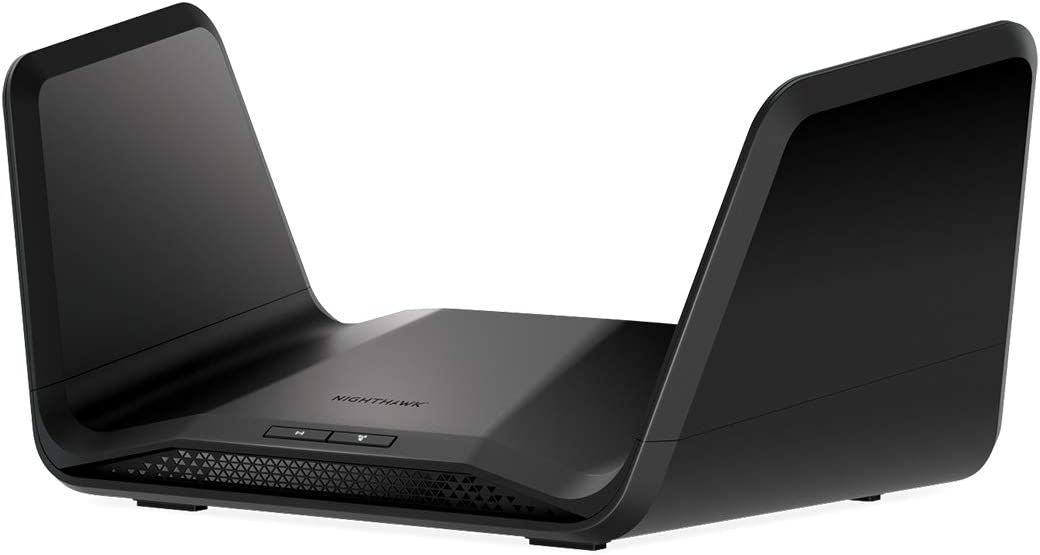
- WiFi Range: Up to 2,500 Sq Ft
- Number of Devices Supported: 40+
- Wireless Standard: Wi-Fi 6 (802.11ax)
- Supported Internet Plan: Up to 2 Gbps
- 2.4GHz Speeds: 600 Mbps
- 5GHz Speeds: 4800 + 1200 Mbps
- Ports: 1 x Gig WAN + 4 x Gig LAN + 1 x USB 3.0
- Processor: 1.5GHz Quad-Core
- RAM & NAND Memory: 512MB + 256MB
- App Support: Yes
For those subscribed to the Gigabit plan, Netgear Nighthawk RAX70 is probably the best option to get. This WiFi 6 router encases a powerful quad-core processor to max out its throughput capacity to 6600 Mbps, which is a significant upgrade over RAX50. These upgrades add up to deliver a fast and lag-free performance to your connected devices.
Why is it suited for a two-story house?
Despite its maximum signal range claims of 2500 Sq Ft, I tested the router in my friend’s 2000 Sq Ft small office setup, and the results were fairly positive. Almost every zone got filled out with signals, and none of the tasks got stuck because of the slow internet. Besides, if you reside in an older home, you’d appreciate the router’s ability to punch signals through floors and walls.
I was also impressed by its connections capacity, as it easily passed on through around 35 devices without producing any major lags or hiccups. All are possible with technologies like beamforming, MU-MIMO, and QoS.
Wireless Speeds
Netgear Nighthawk RAX70 boasts an aggregated speed of 6600 Mbps, with respective speeds over three bands as follows:
| 5 GHz (1): 4800 Mbps | 5 GHz (2): 1200 Mbps | 2.4 GHz: 600 Mbps |
Based on the speed tests with Ookla, the RAX70 stands on top of many standalone routers in this price bracket. Over the 1 Gig Xfinity plan, it has the ability to move 967 Mbps and 475 Mbps of data over the 5GHz and 2.4GHz bands, respectively. At the same time, uploads for both bands continued at the rate of 402 Mbps and 125 Mbps.
This represents a third more bandwidth required for online gaming, high-resolution movies, and family data hogs.
Ports & Wired Connectivity
Port setup of RAX70 isn’t as top-tier as with my previous recommendations, with a lacking multi-gig port, but it does have five Gigabit Ethernet (WAN + LAN) to exceed the wireless throughput. The download and upload scores were recorded at 995 Mbps and 487 Mbps, and the available extra Mbps boosts your overall gaming, streaming, and browsing performance.
Security Features
Netgear has almost a similar security setup to TP-Link devices. Under its freemium model, you must pay a sum amount to access its advanced features like malware protection, intrusion blocking, and others. Though there are some basic features like VPN, WPA3, guest access, access control, and auto-firmware update, which can secure your residential network setup.
Conclusion
If you’re in for a 1 Gig compatible router suitable for a 2-story house, look no further than Netgear Nighthawk RAX70. It not only gets you the fastest throughput than most routers in this bracket but can force its signals through any thick walls or metal doors. However, some of its security features are paid, which pushed the router to the third position.
Pros
- Great throughput capacity
- Decent coverage
- MU-MIMO and QoS
- Aesthetics are great
Cons
- Some security features are paid
4. Best Mesh WiFi: TP-Link Deco XE75
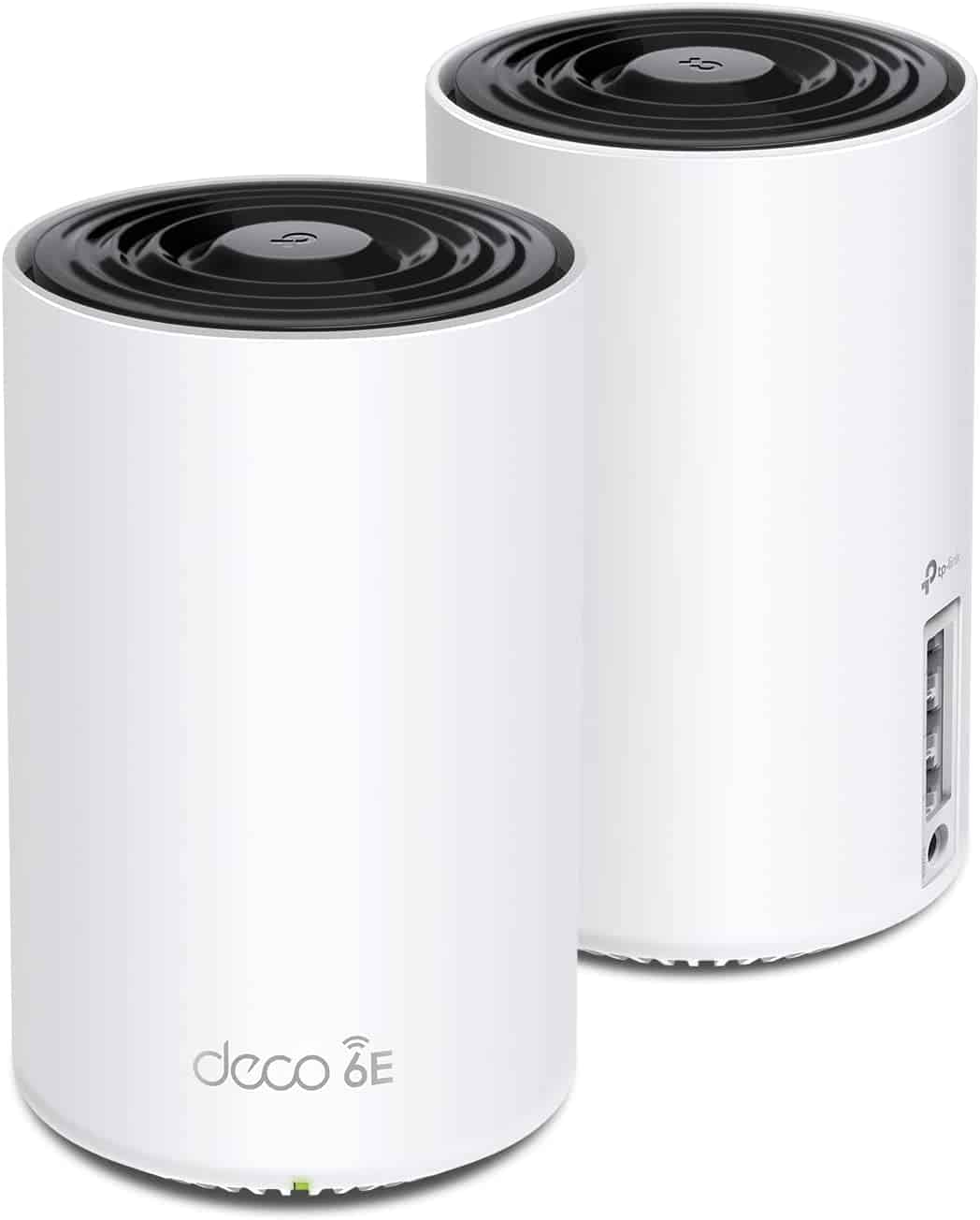
- WiFi Range: Up to 7,200 Sq Ft
- Number of Devices Supported: 200+
- Wireless Standard: Wi-Fi 6E (802.11ax)
- Supported Internet Plan: Up to 1 Gbps
- Supported Internet Plan: Up to Fiber 1 Gbps
- 2.4GHz Speeds: 574 Mbps
- 5GHZ Speeds: 2402 Mbps
- 6GHz Speeds: 2402 Mbps
- Ports: 3 x Gig Ports on each unit
- Processor: 1.7GHz Quad-Core
- RAM & NAND Memory: N/A
- App Support: Yes
If your space exceeds 3000 Sq Ft, it’s better you get a mesh system rather than getting a router+extender setup, and what’s better than TP-Link Deco XE75? Its WiFi 6E setup with an additional 6GHz band works harmoniously with the quad-core processor to deliver superior performance than its predecessor.
Why is it suited for a two-story house?
With a proclaimed 7200 Sq Ft coverage, Deco XE75 can be deemed as the top choice, especially when it comes to coverage. The actual value was although 4500 Sq Ft at top, which is still enough for any two-story house or office space. My large house was a smaller playground for the mesh system, and the signals were even accessible to my neighbors.
Its performance was also exceptional in the multi-device setup, as MU-MIMO, beamforming, and OFDMA streamline the data traveling to many devices at once and not frailing down suddenly. The maximum number of devices I could connect was 65, which stands above most routers on my list.
Wireless Speeds
Deco XE75 boasts a maximum throughput capacity of 5400 Mbps, with respective band-wise speeds as follows:
| 6 GHz: 2402 Mbps | 5 GHz: 2402 Mbps | 2.4 GHz: 574 Mbps |
Unsurprisingly enough, the throughput results over the mesh system turned out very respectable. Over the higher 6GHz and 5Ghz bands, download speed scores with the 1 Gbps plan was around 977 Mbps and 914 Mbps, respectively, while uploads were recorded at 487 Mbps and 428 Mbps. At the same time, respective speeds for 2.4GHz were recorded at 458 Mbps and 145 Mbps.
The devices connected to the 6GHz band can expect a faster data exchange with the router with some additional channels, alongside lesser lags and latencies.
Ports & Wired Connectivity
The rear panel of XE75 holds a 2.5G WAN along with two Gigabit Ethernet ports, which is a useful feature, especially if you have a Gigabit internet plan. Connected to these, your devices can clock at a maximum speed of 1.05 Gbps and 522 Mbps, respectively. But there aren’t any USB ports available with the system, so there goes the desire to transfer using a USB drive down the drain.
Security Features
Similar to its sibling model, you just get the TP-Link HomeShield basic for free. With the features available with it, you can browse through any website without revealing your identity (the VPN), allow any devices to access your network temporarily (guest access), and keep your transferred datasets encrypted (WPA3).
Besides, an auto-firmware update feature keeps your system updated with the latest security features.
Conclusion
If you have made up your mind to hop on the 6GHz bandwagon and have a large space to cover, TP-Link Deco XE75 is worth considering. Its performance is solid in multiple aspects, speeds, coverage, or consistency. However, its limitations include a lack of USB ports and some HomeShield features requiring a subscription, which took it down the list.
Suggested Read: Best Mesh WiFi Systems
Pros
- WiFi 6E support with an additional 6GHz band
- Easy installation
- Solid performance
- Multi-gig WAN
Cons
- No USB ports
5. Best Value for Money: Linksys MR9610
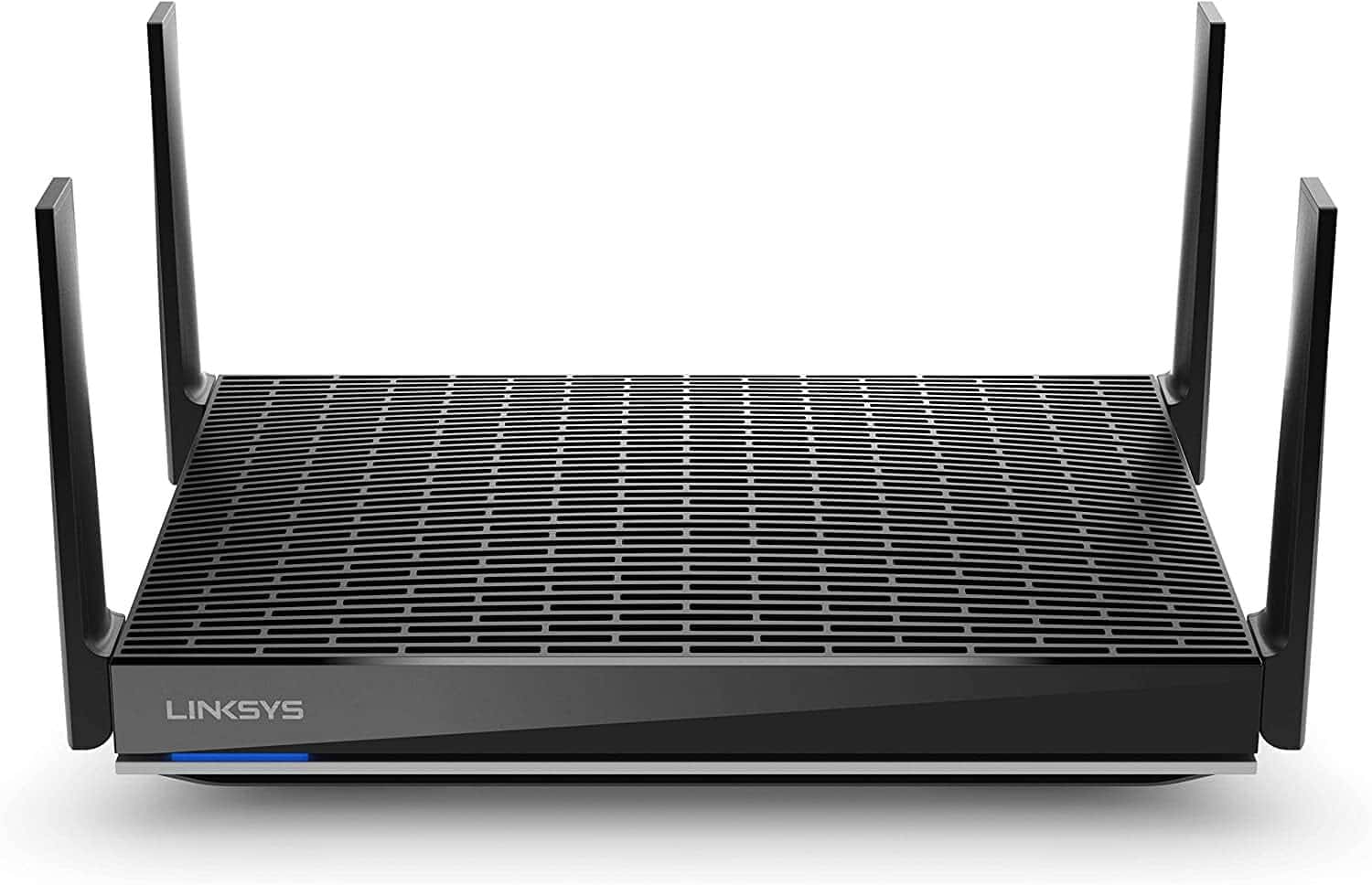
- WiFi Range: Up to 3,000 Sq Ft
- Number of Devices Supported: 40+
- Wireless Standard: Wi-Fi 6 (802.11ax)
- Supported Internet Plan: Up to 1 Gbps
- 2.4GHz Speeds: 4804 Mbps
- 5GHz Speeds: 1147 Mbps
- Ports: 1 x Gig WAN + 4 x Gig LAN + 2 x USB 3.0
- Processor: 1.8GHz Quad-Core
- RAM & NAND Memory: N/A
- App Support: Yes
If you are in quest of the best router for a multi-level home, you probably have heard of Linksys MR9610. Priced around $120, features like dual-band WiFi 6 support, a powerful processor, and a multi-port setup make it much more reliable than most existing routers. The upgrades it instills over Linksys MR9600 at a few extra dollars are so much worth of an option to consider.
Why is it suited for a two-story house?
Suitability of a router for a two-story house comes with the strength of its antennas and how far it can impart the signals. And with four external antennas of MR9610, signals can travel to an area of up to 2500 Sq Ft, an average-sized two-story house. The best part is signals are stable, and with QoS, MU-MIMO, beamforming, and OFDMA, you can connect and enjoy fast internet on up to 25 devices at once.
Wireless Speeds
Linksys MR9610 has an aggregated speed of 6000 Mbps, distributed over dual bands as follows:
| 5 GHz: 4804 Mbps | 2.4 GHz: 1147 Mbps |
Besides its top-tier acclaimed speeds, the router performs well in real-life settings. Paired with the Cox 1 Gbps plan, its 5GHz band logged speeds at 897 Mbps and 341 Mbps, respectively, for downloads and uploads. Similarly, respective speed values for the 2.4GHz band were 409 Mbps and 157 Mbps.
MR6910 also delivered a positive result in my stress tests. Even after connecting to multiple devices on tasks like gaming, streaming 4K movies, and attending video calls, there was more than enough bandwidth left to send emails, streaming HD music, and browsing social media.
Ports & Wired Connectivity
Port setup isn’t that top-tier due to the lack of a 2.5G port, but with five GigE, and two USB 3.0 ports, it doesn’t disappoint much. My devices could access Gigabit speeds without any slowdown or buffers with the Ethernet ports. And its USB 3.0 ports are made for faster file transfer, as it took around 10-12 minutes to transfer my 1.2GB file to the USB drive.
Security Features
Security isn’t great in Linksys routers, which is why it’s ranked below TP-Link, Netgear, and Asus options. There are only a few in-built features like guest access, WPA3, VPN, and access control for basic protection, alongside some parental controls like manual website blocking, scheduling network access, and monitoring online time.
Conclusion
To conclude, this Linksys option is specially designed for people looking to cover their decent-sized two-story house with powerful signals without blacking out their savings. Despite its price range, you won’t have to compromise on features except for security. So, make sure to get a third-party antivirus installed on your devices to get them secured.
Pros
- MU-MIMO, OFDMA, and QoS for stable connections
- Decent throughput capacity
- Great coverage
- Dual USB ports
Cons
- Security feature isn’t advanced
6. Best Parental Controls: Gryphon Tower
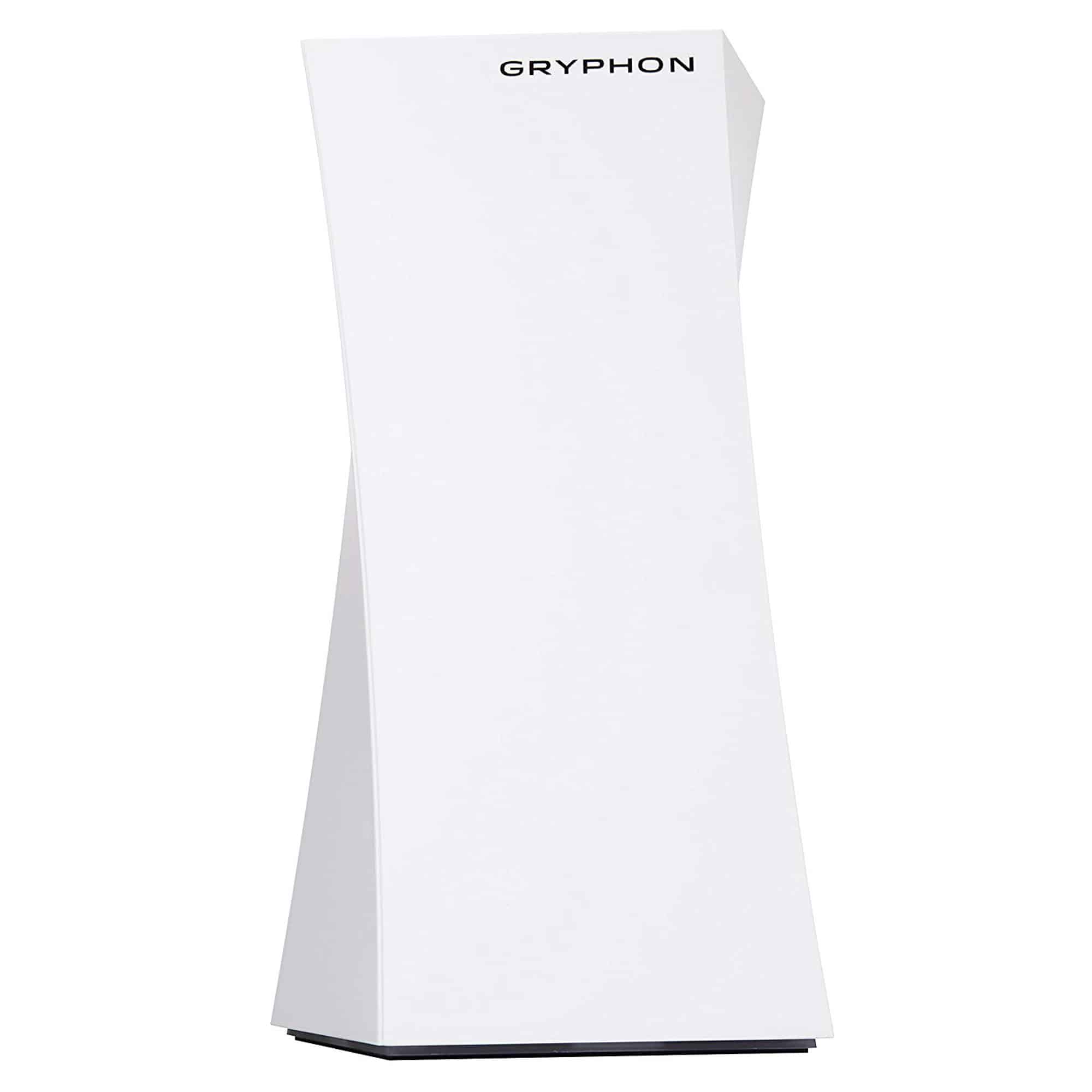
- WiFi Range: Up to 3,000 Sq Ft
- Number of Devices Supported: 50+
- Wireless Standard: Wi-Fi 5 (802.11ac)
- Supported Internet Plan: 500 Mbps
- 2.4GHz Speeds: 400 Mbps
- 5GHz Speeds: 1700 + 866 Mbps
- Ports: 1 x Gig WAN + 3 x Gig LAN
- Processor: Quad-Core
- RAM & NAND Memory: 512MB + 4GB
- App Support: Yes
Next, presenting you with another mesh system that showboats some decent features alongside its cutting-edge security to feature in this list of the best internet routers for large homes. Security-wise, it’s the best router of the lot, but its tri-band support, decent antennas, and powerful processor delivers a decent enough performance for your two-story home.
Why is it suited for a two-story house?
I tested this Gryphon one-pack mesh system which has a maximum theoretical coverage of 3000 Sq Ft, and you can tap into the two-unit to get double the coverage. Testing it in real-life settings, the maximum range obtained was around 2400 Sq Ft, almost identical to my previous suggestion.
The router further supports beamforming, 4×4 MU-MIMO, and automatic band steering to deliver optimal performance to your multiple connected devices. The number can go as high as 32, more than enough for residential network setup.
Wireless Speeds
Aggregated speeds of 3000 Mbps are distributed between three bands as follows:
| 5 GHz (1): 1700 Mbps | 5 GHz (2): 866 Mbps | 2.4 GHz: 400 Mbps |
In the real-time tests, I paired the Gryphon Tower with a Cox 500 Mbps plan and measured the speeds for the 5GHz and 2.4GHz bands. The superior band clocks respective download and upload speeds of 487 Mbps and 121 Mbps, while 241 Mbps and 87 Mbps for the 2.4GHz band. The device, although it passed my penetration tests, middled in my stress tests.
Ports & Wired Connectivity
Mesh systems aren’t known for their excellent port setup, and Gryphon Tower walked hand in hand with the trend with only four Gigabit Ethernet ports. You have three slots to connect your bandwidth-heavy devices with the router and boost your speeds to up to 507 Mbps and 187 Mbps, respectively.
Other than that, it lacks USB ports, so there goes the possibility of connecting peripheral devices down the drain.
Security Features
Security tools or parental controls, this mesh system excels in both departments. To start, it proffers advanced firewall security to protect your device from any unauthorized access, malware, and virus infestation. Furthermore, there are a few standard features like VPN, WPA3, guest access, and auto-security update, amongst others.
Moving on, its advanced parental controls like website and app blocking, valuable usage insights, individualized time limits, and content monitoring let you ensure that your kids are safe when online.
Conclusion
Gryphon Tower, with its powerful antennas and processor, not only blankets your entire two-story space with strong signals, but its parental controls let you monitor what your family is doing online. Besides, its security tools protect your network ecosystem from any virus and malware attacks.
Nevertheless, limitations like the lack of USB ports and middling device support have pushed it to this spot.
Pros
- Good throughput
- MU-MIMO enabled
- Excellent parental controls and network security tools
- User-friendly app
- Easy to install
Cons
- No USB ports
- Middling device support
7. Best for Smarthomes: Google Nest WiFi
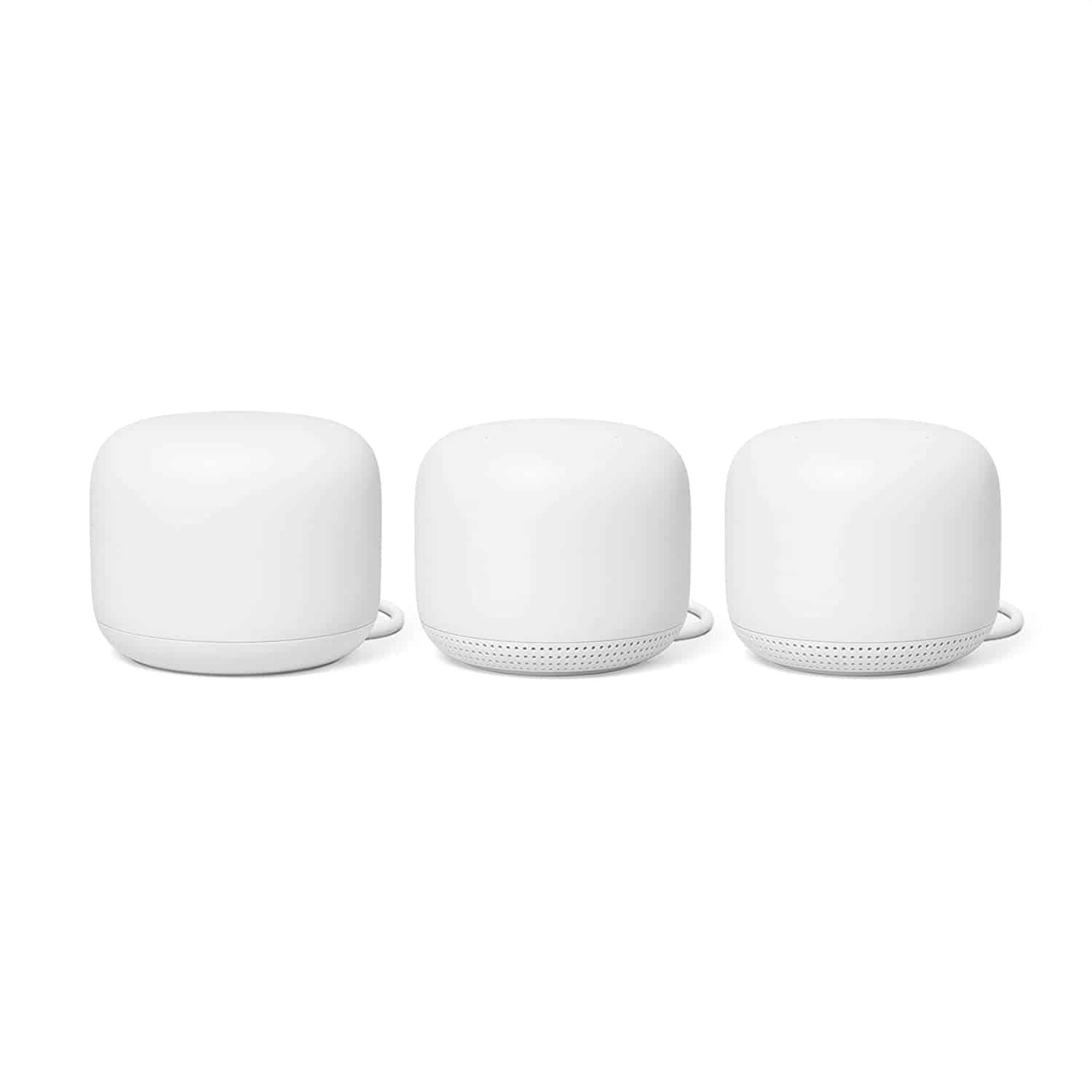
- WiFi Range: Up to 3,800 Sq Ft
- Number of Devices Supported: 100+
- Wireless Standard: Wi-Fi 5 (802.11ac)
- Supported Internet Plan: Up to 500 Mbps
- 2.4GHz Speeds: 400 Mbps
- 5GHz Speeds: 1733 Mbps
- Ports: 3 x Gig LAN
- Processor: 1.4GHz Quad-Core 64-bit ARM
- RAM & NAND Memory: 1GB + 4GB
- App Support: Yes
Adding to the list is another mesh system that, aside from encapsulating your large 2-story house with signals, gets you a decent throughput capacity, courtesy of its powerful CPU and ample storage. It’s a worthy successor to an incredibly popular Google WiFi but builds on it to offer something that becomes a valid pick for any modern smart house.
Why is it suited for a two-story house?
Theoretically, the two-unit Google Nest WiFi has an incredible range of 3800 Sq Ft, so I tested this mesh system in my 3700 Sq Ft mansion-style 2-story house. The sad part is it left some dead spots in the corners, so I might need to pair another unit to eliminate them fully. The maximum recorded range is 3200 Sq Ft, which should be adequate for any of your mid-sized homes.
Besides the existence of technologies like beamforming and MU-MIMO, the signals could be transmitted to over 50 devices at once. All smart devices installed in my house except the smart bulb in my garden got up and running with minimum lags.
Wireless Speeds
An aggregated speed of 2200 Mbps is distributed over the two bands as follows:
| 5 GHz: 1733 Mbps | 2.4 GHz: 400 Mbps |
The throughput tests over both the bands with Cox 500 Mbps plan were fairly good. The downloads and uploads over the 5GHz band were recorded at 437 Mbps and 147 Mbps, respectively. At the same time, respective speeds over the 2.4GHz band were 225 Mbps and 78 Mbps.
The speed output with the bands might be lower than my options mentioned above, but its stability and consistency over multiple devices were noteworthy, credits goes to beamforming and MU-MIMO.
Ports & Wired Connectivity
In the rear panel, you’ll find two Gigabit Ethernet ports, amongst which one is occupied, connected to the modem, thereby limiting the wired connections. Nevertheless, the connection lets you experience speeds of up to 495 Mbps and 174 Mbps, respectively, for downloads and uploads. And similar to other mesh routers, you won’t find any USB ports to connect.
Security Features
Google, although it has an ardent focus on the security of its devices, it doesn’t give out many for free. The basic features include VPN, WPA3, and auto-security updates. Similar is with parental controls as only an internet dashboard showcasing total online time and network pausing feature is available for free.
But if you are in need of advanced features, consider subscribing to and installing its premium security features.
Conclusion
Overall, Google Nest WiFi is the cheapest mesh system available to you on the market, but there are some handy features to get most of your internet-bound tasks sorted. Its coverage is the standout aspect of this mesh system and gives you the flexibility to stay connected to your devices anywhere in your space. But inferior features and lesser ports have ranked it in the penultimate position.
Pros
- Great coverage
- Simple-to-use app
- Decent throughput
- Excellent design
Cons
- Lesser ports
8. Cheapest Option: ASUS RT-AX55
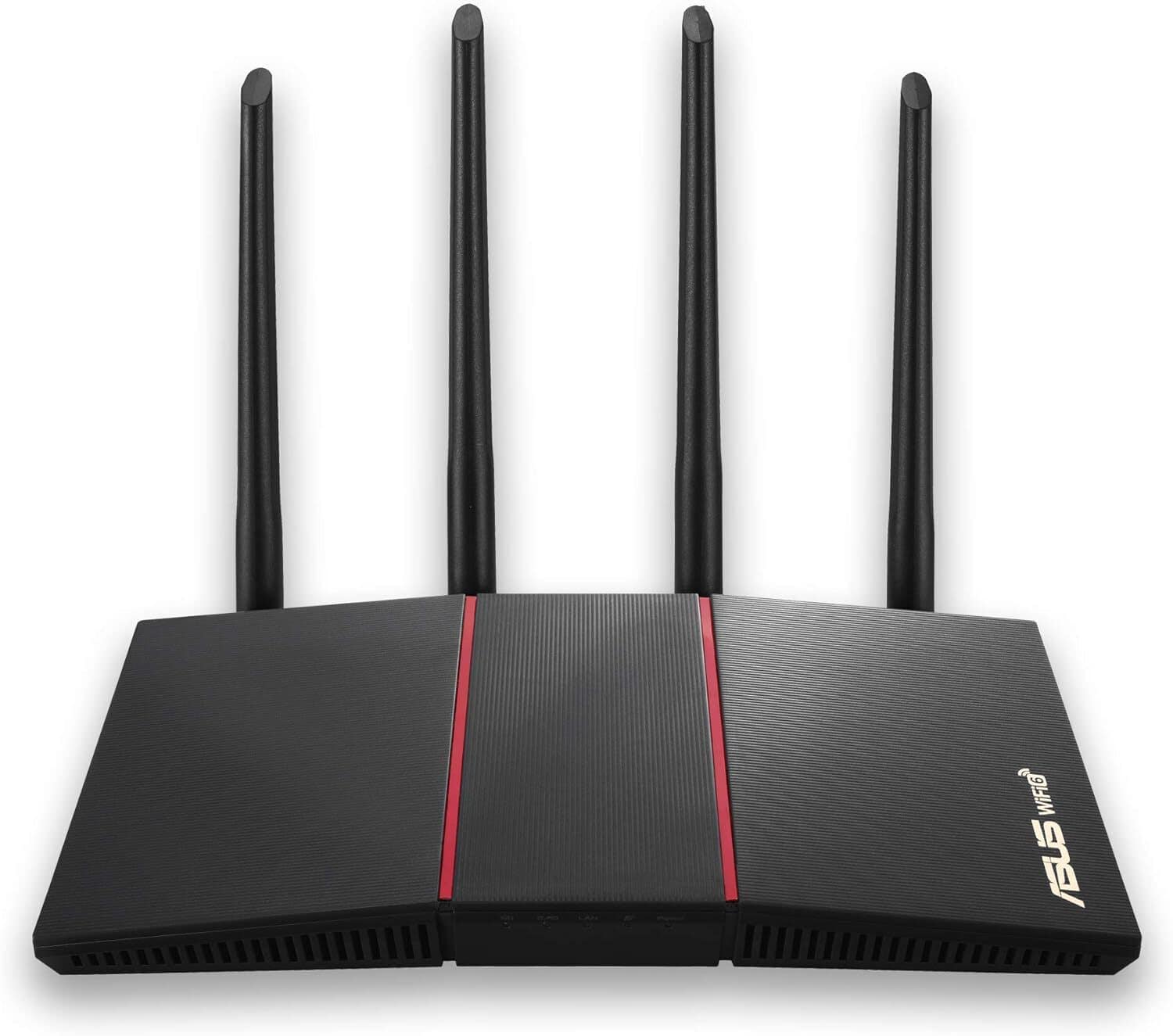
- WiFi Range: Up to 2,000 Sq Ft
- Number of Devices Supported: 30+
- Wireless Standard: Wi-Fi 6 (802.11ax)
- Supported Internet Plan: Up to 300 Mbps
- 2.4GHz Speeds: 574 Mbps
- 5GHz Speeds: 1201 Mbps
- Ports: 1 x Gig WAN + 4 x Gig LAN
- Processor: 1.5GHz Quad-Core
- RAM & NAND Memory: 256MB + 128MB
- App Support: Yes
Lastly, presenting you with a low-cost WiFi 6 router for people who want an upgrade over their outdated ISP router and don’t want to spend much. Despite its lower cost, Asus RT-AX55 instills a range of handy features like a quad-core processor, dual-band WiFi 6 support, and a decent arrangement of ports, which translates to reliable performance.
Why is it suited for a two-story house?
The Asus RT-AX55, thanks to its four antenna configuration, is able to efficiently extend its coverage up to 1500 square feet, making it ideal for a compact two-story house. However, its AiMesh compatibility lets you pair another similar router (or another unit of this) to double up on your coverage.
My client was quite pleased with the performance, as he could connect 20 different devices, such as laptops, PCs, gaming consoles, and mobile devices. All credits go to the advanced networking technologies, such as OFDMA and beamforming, that the device is equipped with.
Wireless Speeds
This budget router has a maximum throughput capacity of 1800 Mbps, distributed over its two bands as follows:
| 5 GHz: 1201 Mbps | 2.4 GHz: 574 Mbps |
Despite being a budget offering, this router offers a good upgrade over your aging old router in your workspace. In the Ookla speed test, downloads and uploads occurred at the rate of 287 Mbps and 78 Mbps, respectively, over the 5GHz band, connected to Cox 300 Mbps plan. At the same time, respective speeds recorded at 119 Mbps and 27 Mbps with a 2.4GHz band.
Despite displaying the lowest values amongst my recommendations, it was still fast enough for routine web browsing, streaming video, and playing games.
Ports & Wired Connectivity
Its port setup with one Gigabit WAN and four LAN ports is much decent, considering the price point, and offers more connectivity options than in mesh systems. If you only are going to rely on wired connections, upgrading your internet plan to up to 1 Gbps should get you near-gigabit speeds. Nevertheless, with the 300 Mbps plan, expect speeds up to 310 Mbps and 57 Mbps, respectively, for downloads and uploads.
Security Features
Security is the area where the router stays a tad ahead of its competitors with the AiProtection classic. Aside from basic features like VPN, guest access, WPA3, and access controls, it has some advanced features like intrusion blocking and malware detection at its disposal. So, your devices and network should now feel more secure with this routing device installed.
Aside from these, the device also boasts some useful parental control features, such as age-appropriate filters, the ability to block specific websites manually, the option to pause WiFi access, and the ability to create custom internet access schedules. The best thing about these is you don’t have to spend a penny to access these.
Conclusion
Asus RT-AX55 fits your bill nicely if you’re in the market for an affordable router with a WiFi 6 upgrade. Its speeds are modest compared to those top-tier options in the market but can still handle most home broadband services and dissipate enough bandwidth for fast and reliable web browsing, casual gaming, and streaming video and music.
Pros
- Affordable WiFi 6
- AiMesh supported
- Easy to setup
- Lifetime-free security tools and parental controls
Cons
- Coverage is a bit on the weaker side
Frequently Asked Questions
A good router for a 2-story house should have multiple and powerful antennas to improve the signal strength. If you have a decent budget to put in, get a tri-band router to get a decently fast internet on your connected devices and minimize interference, or else dual-band routers should work fine. Get a mesh system if you have a large 2-story house to cover.
To get the maximum coverage, make sure your router is put in the most central location. So, it’s important that your device is placed near the ceiling on the first floor or near the floor of your second floor. In either case, keep the furnitures at a fair distance to avoid any potential signal interferences.
For most homes, one router should be enough. If you reside in a large home with multiple network weak zones or dead spots, pair your router with an extender/access point, or upgrade to a mesh system.
A standalone router can expand its signals to an area of up to 3500 Sq Ft, but if your house is bigger than that, consider upgrading to a mesh router rather than opting for an extender to get a better performance.
Verdict
If you’re residing in a two-story house, purchasing a router with good coverage and range would be better. And if you have a large house, invest in a router with coverage ranging between 3000 and 4000 Sq Ft, thereby eliminating dead zones and connecting more devices simultaneously.
I hope going through the list helps you find your ideal pick, but if you still are confused, here’s my curated list of the best options:
- If you don’t want to compromise with the features and aren’t bothered by the price, go for the best router suitable for 2-story house, that is, Asus ROG GT-AX11000. Although it’s the most expensive option, it has some exceptional features like outstanding speeds, coverage, and port setup, with the added benefit of lifetime-free security.
- For those who don’t have a large budget to spend but need powerful signals all across their mid-sized 2-story home, go for Linksys MR9610.
- And finally, if you want the cheapest option and a major upgrade to your ISP-rented device, pick Asus RT-AX55.
With that, I would conclude my guide to the best wireless routers that can cover a 2-story house. Aside from my list, you can go for any models available that suit your needs, but make sure not to compromise on features to save a couple of dollars. Saying that I’d wrap up this guide. Goodbye and happy networking!


